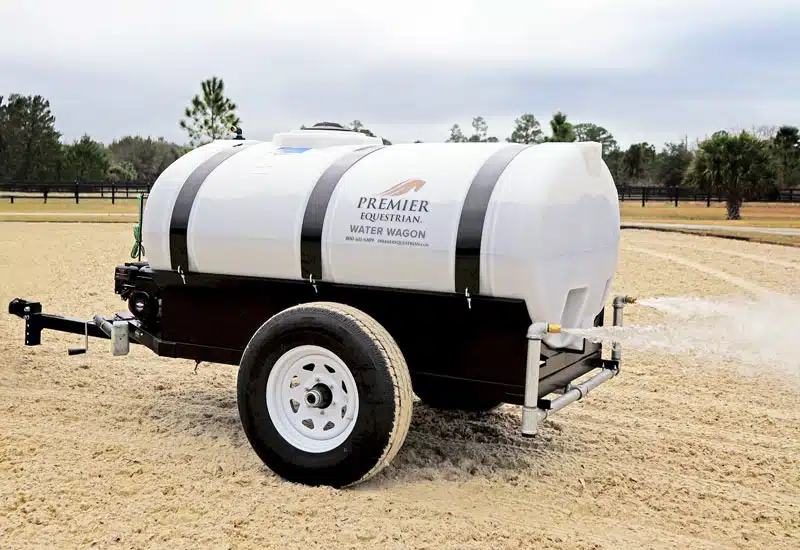Arena Maintenance Basics
Proper arena maintenance is one of the best things you can do for you and your horse.
Riding arena footing doesn’t stay in prime condition without consistent maintenance. A grooming program keeps sand and additives in top shape.
What is arena maintenance?
Arena maintenance is caring for your surface. Think about how you care for your horses. Currying, brushing, bathing, farriers, vets, massage perhaps, nutrition and hydration, tack, boots, blankets, it goes on and on. Arena maintenance is similar, and doing lots of little things consistently will prevent you from having to do major, expensive things in the long run.
Arena maintenance includes keeping the surface level and consistent through regular grooming or dragging, water application, ensuring proper drainage, and incorporating sand and/or footing additives when needed.
Your grooming schedule will depend on your arena traffic and conditions. Some equestrian arenas need grooming multiple times per day while others may be fine with a couple times per week. Understanding how your surface performs will help you recognize when your surface is in need of what type of maintenance.
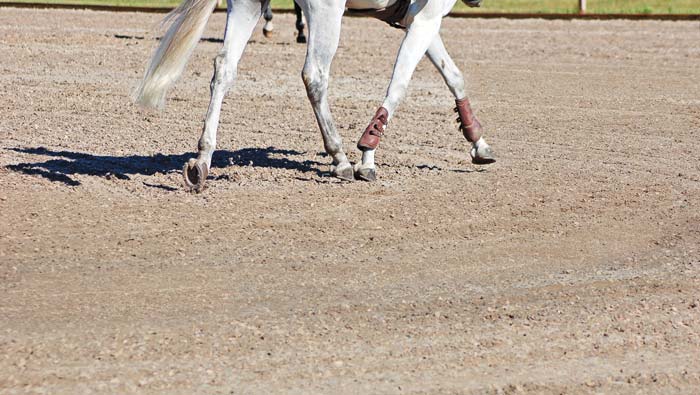
Arena Maintenance Goals
- Keep sand particles and footing products mixed
- Loosen a compact surface
- Tighten a loose surface
- Level out the surface – divots, deep/shallow spots, hard spots, etc.
- Eliminate ruts in high traffic areas
- Pull in migrating materials
- Minimize dust and promote drainage
Do you have maintenance questions? Ask Us!
Keeping Sand and Additives Mixed
Vibrations and movement cause particles to separate into layers, with the smallest on bottom and largest on top. Read our blog about the Brazil Nut Effect. When the particles separate, the top layer becomes unstable, while the lower layer may compact.
Footing additives have specific functions to enhance sand qualities, and they are designed to be mixed with the sand. With everything separating, the additives can no longer do their job. Regular grooming combats the separation of layers and keeps particles and additives evenly mixed.

Granular Segregation, or “The Brazil Nut Effect”: When shaken, the larger particles tend to rise to the top of the mixture.
Grooming Equipment
Grooming equipment will have a direct result to your arena’s long-term performance. Older styles of equipment like chain drags, or drags with only straight teeth, will not support proper mixing of the sand particles and don’t work with textile additives.
The depth and angle of tine bars can be adjusted on all Premier Arena Drags. Groomers lift particles, mix, fluff, compact, and level the arena surface. Roller bars stabilize the groomer while adding compaction.
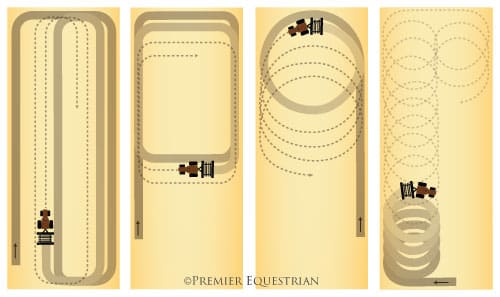
Grooming Patterns
Change up the pattern each day so that the tractor doesn’t create compaction. Be sure to not always drive on the rail. Here are some suggested patterns.
How Often Should I Drag My Arena?
Daily Arena Maintenance
Daily grooming goals include cleaning up foot prints, removing ruts on the rail and around jumps, and keeping the surface level and consistent.
- Daily grooming is best. However, if there are only a few rides each day, then every other day may be sufficient. If the arena has no use, groom at least once a week to keep it primed.
- Arenas with textile additives require consistent dampness to keep the sand and textile properly mixed. Watering should be done daily, or at least on an as-needed basis.
- Always remove organic material (manure, urine and leaves) from your arena. As it breaks down it will create dust, introduce bacteria and change the consistency of your surface over time.
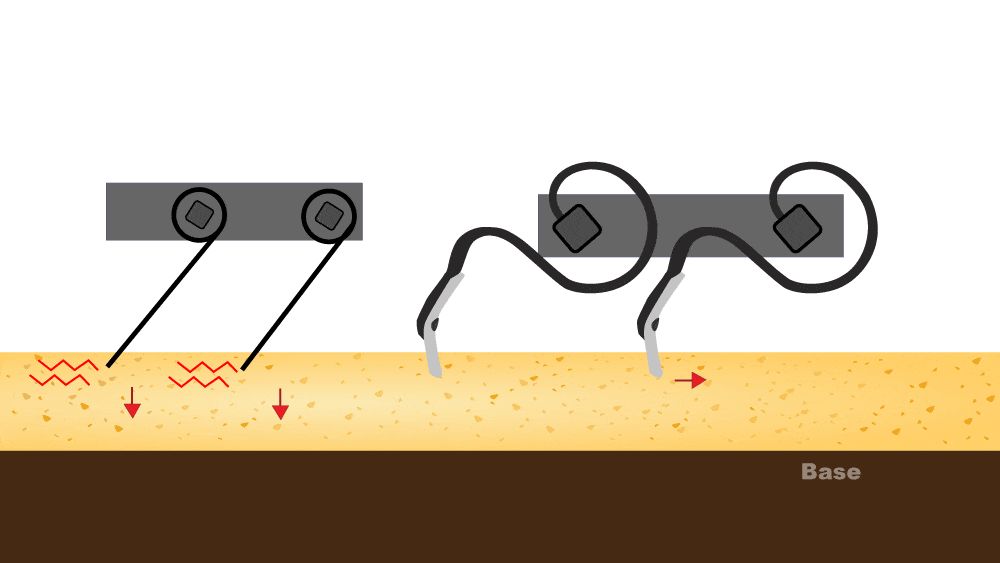
Coil Tines & S-Tines: Passive position (hole 1 or 2)
Fluff the top layer of the arena surface. Set between 1 – 1.5” depth. S-Tines will fill in the hoof prints and help level the surface. Coil tines fill in the grooves from S-Tines and help to compact the mid-base.
Weekly Arena Maintenance
Deep conditioning sessions may be in order if you have heavier traffic, you’ve had wet weather, or if the arena hasn’t been used or groomed in several days (or longer).
- If you have a footing additive, digging and mixing a bit deeper once a week will help maintain a proper blend. Hand raking the corners, edges or hard-to-reach spots is also a good weekly practice. See settings on the next page for mixing adjustments.
- If your arena has jumps, move them around and thoroughly condition the take-off and landing spots.
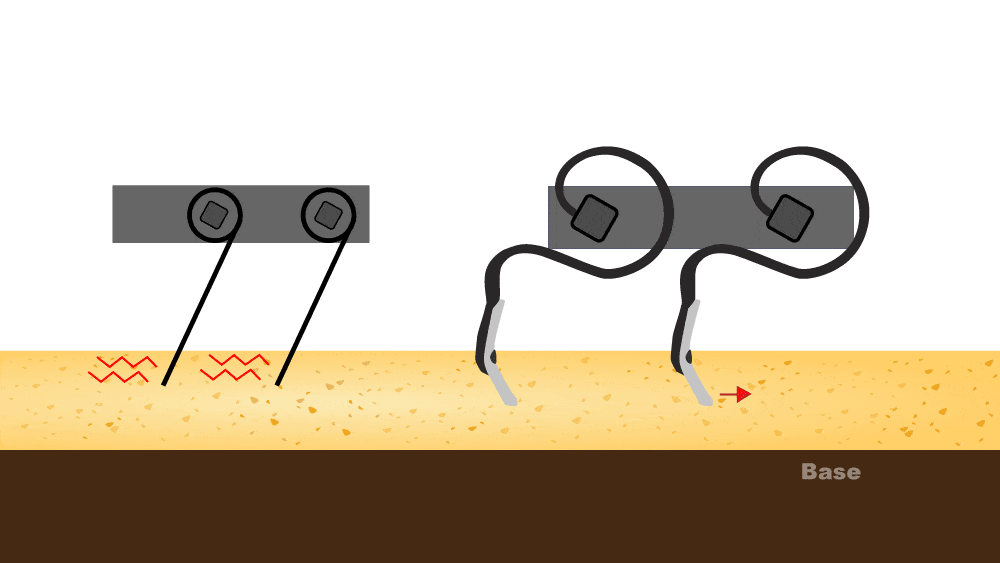
Coil Tines & S-Tines: Active position (hole 3 or 4)
S-Tines will scrape hard spots in the base, and loosen and redistribute material and sand to level the surface. Coil Tines will break up chunks and help mix and blend the arena surface.
Compact a Loose Surface
In the compaction setting, we want both sets of tines out of the surface and allow the roller to compact the surface.
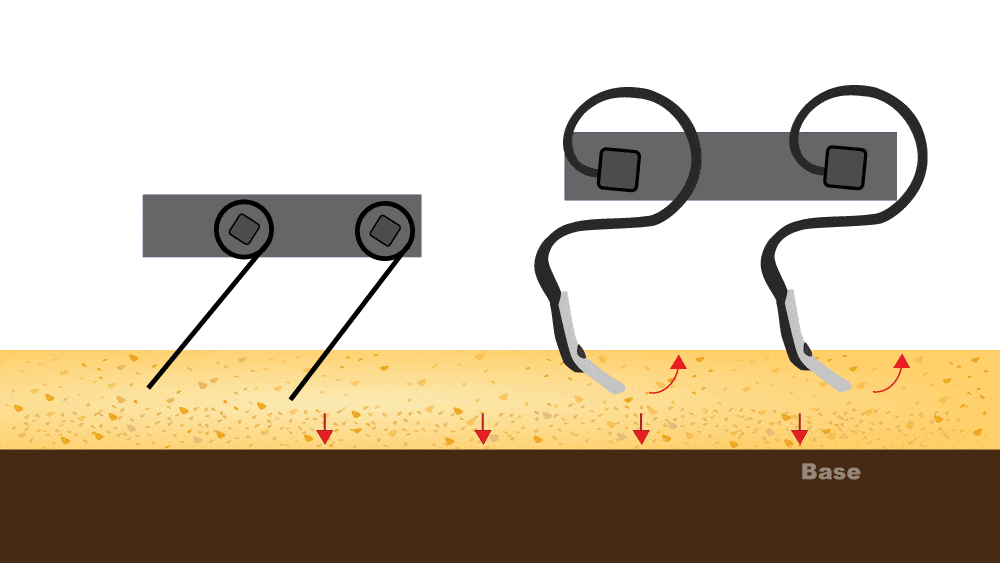
Coil Tines & S-Tines: Disengaged position (hole 0)
Mixing and Tilling
S-Tines will lift particles that have settled near the base. They also mix footing products together with sand. Coil tines will break up chunks and help mix and blend the arena surface.
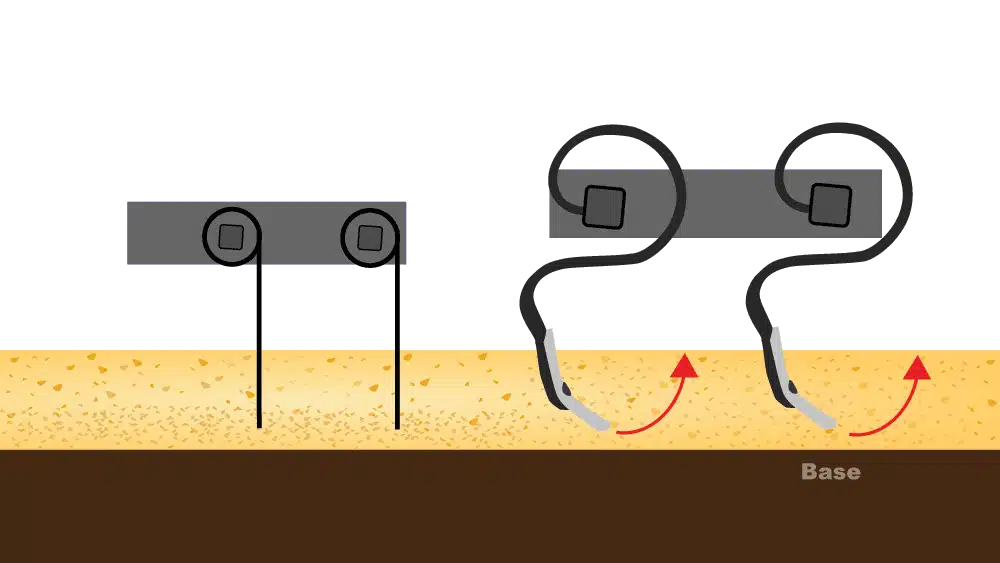
Coil Tines & S-Tines: Active position (hole 5 or 6)
Yearly Arena Maintenance
“Flipping” your surface once a year is beneficial if your arena has settled over a long period of time, or if regular maintenance has not been performed. This involves scraping up the footing above the base or base mats and flipping the sand and footing to re-blend the surface.
This is also a good time to examine the quality of your sand and footing additives. Sand breaks down over time and creates dust. You may need to incorporate some new sand and/or refresh your footing additives.
Send us a sample of your sand for a free evaluation.
Water
Water is one of the best resources for maintaining a good riding arena surface.
Water adds beneficial stabilization and grip, keeps dust out of the air, and binds materials. Sand and additives stick together better when the surface is damp while grooming. Even without an additive, sand arenas will always perform better when watered.
Your water routine will depend on your watering system, traffic, climate, indoor vs. outdoor, and the amount of moisture you naturally have (humidity, rainfall, none).
Allowing your arena to become too dry can cause several issues. The main issue is that the fibers will separate from the sand and you will start to see the fibers sitting on top of the sand instead of binding to it. The great news is that it can easily be fixed by watering and grooming it back in.
If your footing is too wet, stop watering and allow it to dry up a bit. If it doesn’t drain well after heavy rain, you may need to evaluate your base. Take the time and adjust your watering routine.

